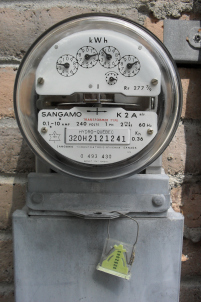 As part of the 2015 Paris Climate Conference in December, the United States supported a proposal to cut global emissions of greenhouse gas in hopes of stalling global temperatures from rising as much as 3.6 degrees Fahrenheit by the year 2100 — a benchmark scientists say would be of great concern. Days later the U.S. Department of Energy took the first step toward reaching this goal when it announced new energy efficiency standards for commercial air conditioners and furnaces.
As part of the 2015 Paris Climate Conference in December, the United States supported a proposal to cut global emissions of greenhouse gas in hopes of stalling global temperatures from rising as much as 3.6 degrees Fahrenheit by the year 2100 — a benchmark scientists say would be of great concern. Days later the U.S. Department of Energy took the first step toward reaching this goal when it announced new energy efficiency standards for commercial air conditioners and furnaces.
The standards, which will require manufactures to produce new, more efficient air conditioning units and furnaces starting in 2018, could reduce carbon pollution by as much as 885 metric tons and save consumers $167 billion in utility bills over the lifetime of the products.
Drexel environmental engineering professor Patrick Gurian, PhD, who recently led a team from the College of Engineering and the A.J. Drexel Institute for Energy and the Environment that produced a plan for the city of Philadelphia to cut its greenhouse gas emissions by 80 percent by the year 2050, explains why this was the first move coming out of the Paris meeting and what other carbon-reducing changes could be on the horizon.
Coming out of the Paris meeting, why do you think this was the approach the Obama administration decided to take in order to make deep cuts in energy use and GHG emissions?
Energy efficiency in buildings is one of the few areas where you can both save money and reduce greenhouse gas emissions. It makes sense to start with an area where greenhouse gas emissions reductions save money.
Another factor is that the enabling legislation (The Energy Policy and Conservation Act) had already been passed by Congress years ago, so the Obama administration did not have to ask for further authorization from Congress.
Finally energy efficiency is an area that has generally received broad support from across the political spectrum. It is seen as economical, not requiring a reduced standard of living and a way to make the U.S. more secure by helping to achieve energy independence.
 How often does a standard shift of this magnitude come along? Why was it important that it happen now?
How often does a standard shift of this magnitude come along? Why was it important that it happen now?
While this is a significant and important step it is not unprecedented. The federal government has been involved in setting energy efficiency standards for appliances and building equipment since 1975. Doing this now makes sense because it takes many years for equipment in buildings to turn over.
We often assume that equipment lasts 20 years. Of course there’s a lot of variability in that number but as a rough estimate one might assume that only 5 percent of the equipment currently in buildings will be changed out each year.
If we wish to achieve significant energy efficiency in the coming decades we need to start on this now.
What does this mean for industry? How soon will we notice the benefits of emissions reductions?
These standards affect what is allowed to be sold as “new” equipment. It will take many years for this newer, more efficient equipment to fully work its way into operation.
The benefits of this will be imperceptible at first but over time the total impact of these efforts can include avoiding “brownouts” (that is, failure to meet peak electrical demand), avoiding the cost and difficulties of siting new electricity generation stations, and of course avoiding harmful impacts of fossil fuel emissions on the climate system.
 What are the next steps for continuing to reduce emissions?
What are the next steps for continuing to reduce emissions?
At some point we would exhaust the measures that both save money and reduce greenhouse gas emissions from buildings. However, there are several workable options for obtaining further reductions at affordable costs. These include greater use of renewables, including solar and wind, which could make up as much as 30 percent of our electricity supply provided that we find ways to reschedule electricity demand to match when these intermittent sources are available.
The capture and long term storage of carbon dioxide from fossil fuels is also possible, and the first large-scale commercial application of this technology is scheduled to come online in 2016. Additional use of nuclear energy is also an option, although certainly long term storage of wastes and safety would both need to be carefully considered.